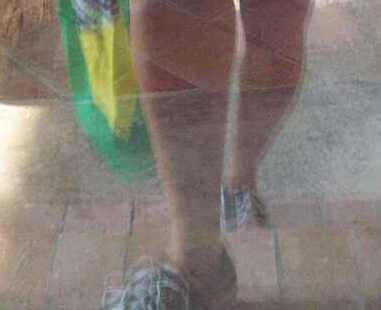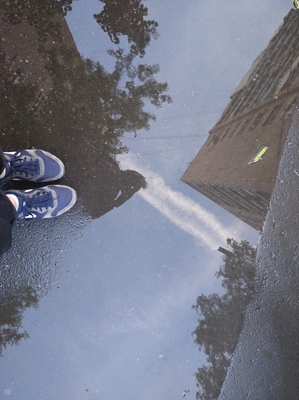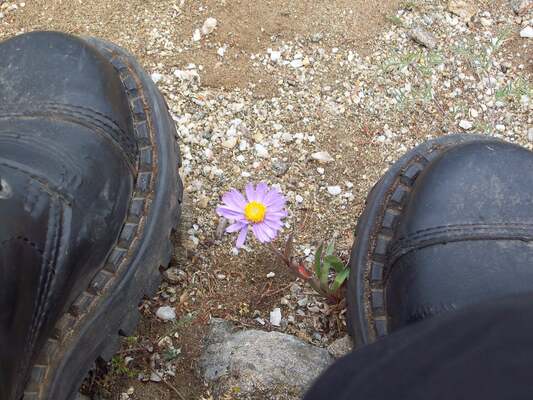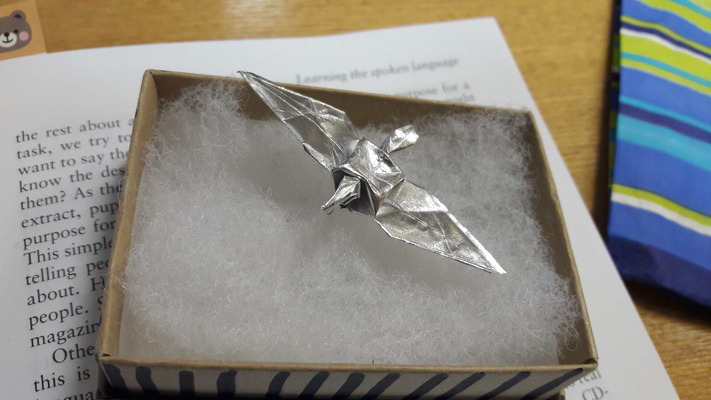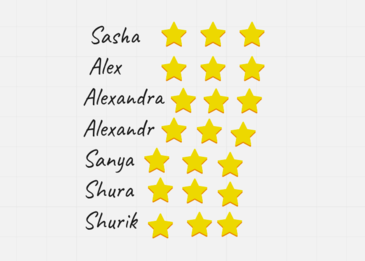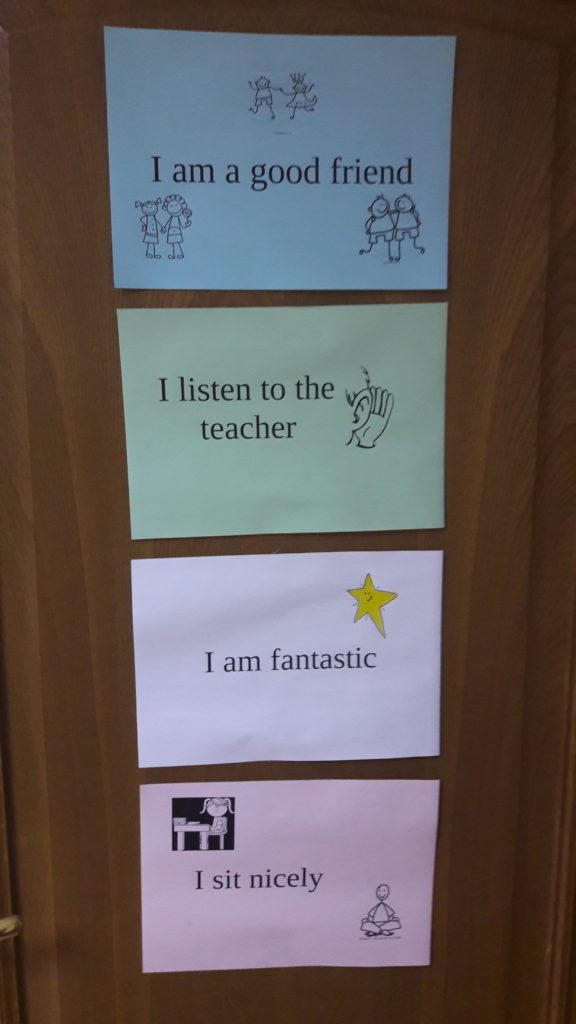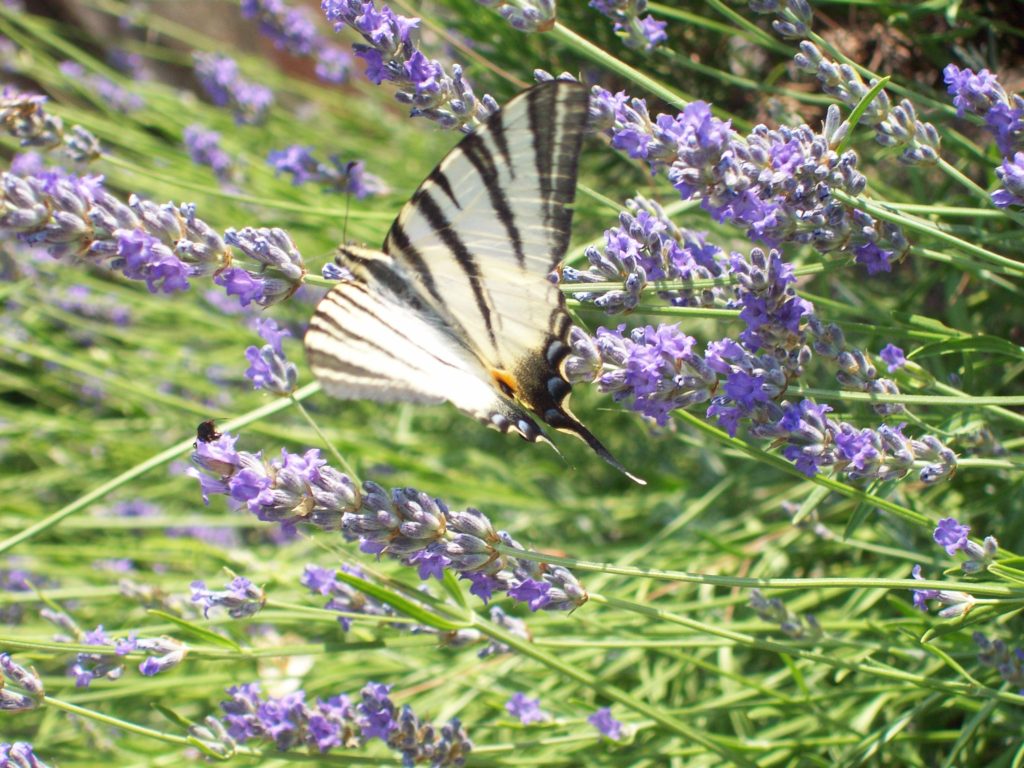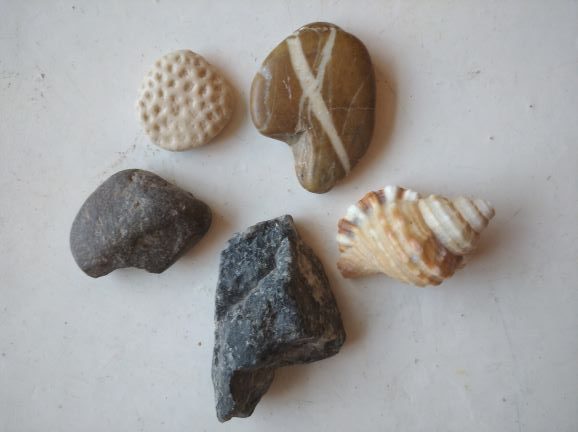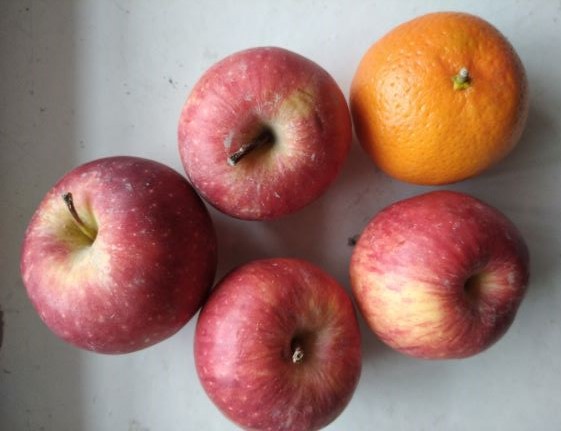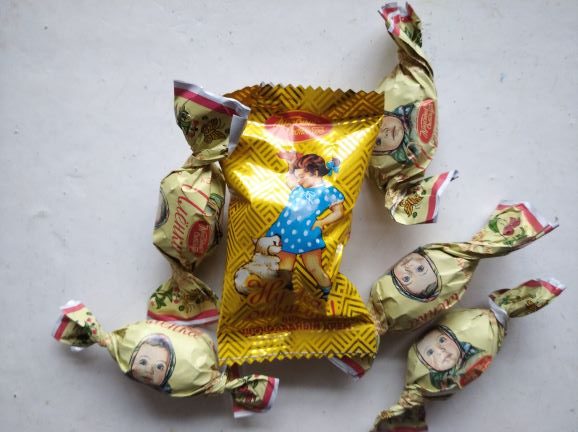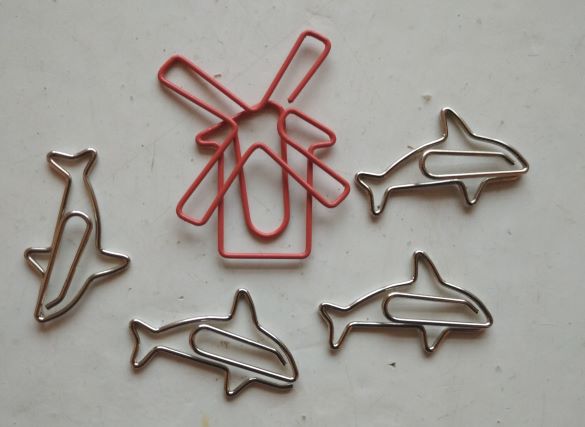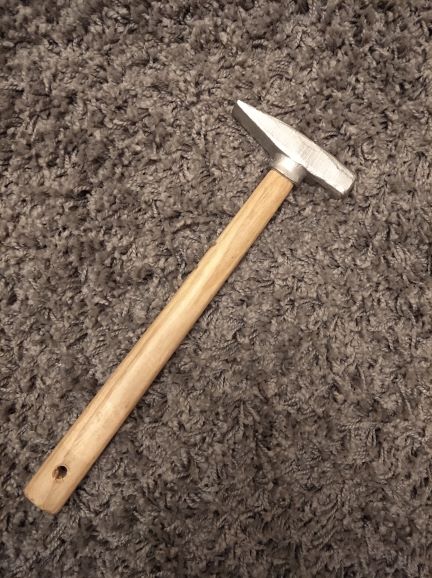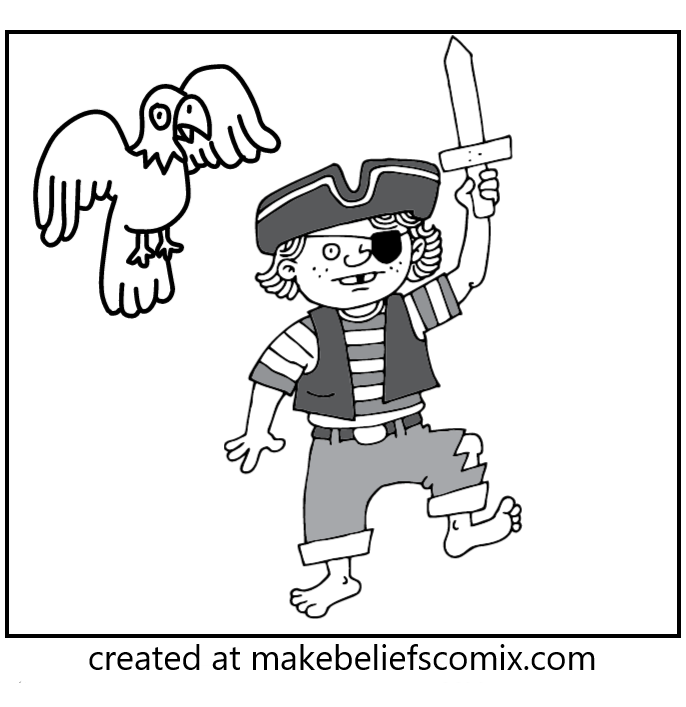
If you don’t have a lot of time, I will give you the answer straight away: the latter.
If you are a teacher who thinks that on entering the classroom, you are going to focus only on teaching a foreign language, then I have to warn you – if you proceed, you might put yourself in danger of getting inspired or getting terribly annoyed because I will do my best to convince you that a teacher of English is also a community leader, and not only in case of the Young Learners groups.

Where this post started: Story #1
My pre-school museum group, a lesson on Henri Rousseau and tigers coming out of the shadows, the main craft activity: an orange finger paint handprint and a black marker to help make this handprint look like a tiger. Plus the jungle, the way the kids see it.
When I demonstrate, the kids are curious and, at the same time, disbelieving that I would do just that: splash the orange blob, smear it on the page, dip my hand it in and then press it onto a pristine A4 piece of paper. With a smile.
As soon as they confirm that I want them to do exactly THAT, a little voice on my left says ‘I am not gonna do that‘ (‘Я не буду‘) but, simultaneously, there is a little hand, in front of me, reaching out, to get to be the first one to get dirty. We go one by one, ‘In the paint. Up. Press. Up. Clean’ and all the girls, cautiously get involved. The Я-не-буду is the last one to go but when it is finally her turn and when she has to make a decision (because participation is optional and I have already decided that if the finger paints are a no-go, there are crayons as the plan B), she is still thinking but she is also pulling up her sleve and reaching out.
Why? Because by now, she has seen it happen five times (one teacher and four friends, because at this point, they are already friends, although it is only the sixth lesson together) and this gave her the courage she needed and the courage she could not find in herself. ‘In the paint. Up. Press. Up. Clean!’
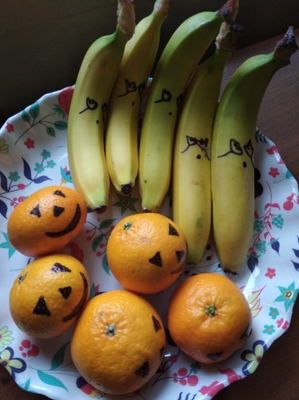
Where this post started: Story #2
My primary kids, a week when we have a trial student in two lessons. The new student is a perfect example of a square peg in a round hole – younger, quieter, not confirmed level of English yet (sigh) and, of course, not familiar with the kids, the teacher or the routine. Or our silly jokes. He stands out, this boy. I support him, of course, and lead him through the lesson but I also am totally engrossed in observing the group. Because, oh my god, it is a show.
Or maybe it is not a show at all. Or the most boring kind of a show. Because nothing happens, the group just accepts him. If you watch closely enough, you can spot an eyebrow raised, here and there (he really does stand out), but other than that – nothing.
My group, they are just regular kids. I mean, they are amazing, every single one of them but not your typical ‘little angels’. These are creative, very loud, with their own opinions and ideas (which they absolutely MUST share) and, as it turns out, they are also very open-minded. Each of them individually and as a group.
Open-minded to decide, without any negotiations or prompts from the teacher, that this new student (even though he is as if from another story) is there for a reason (although they don’t know it) and since he is, he will be included and taken for ‘one of us’ as much as it is possible. I am proud of them.
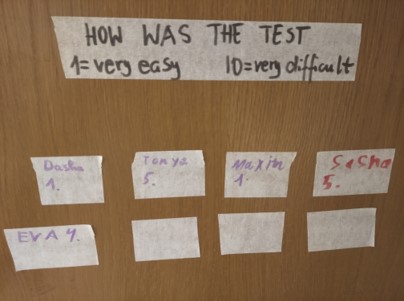
Where this post started: Story #3
My teens and just a regular lesson but because the other two stories happened in the same week, I am observing these ones, too, with more attention to the group vibe. They are great, too! In a teen way.
Simultaneously, they support each other and they mock each other. They applaud when someone does something special or when someone does ‘something special’, genuine praise and gentle mockery. It is a lovely moment, every single time. They do not forget to roll their eyes every time I ask them to move around and to regroup and sit with someone who is not their bestie but they do it, and they do work together, in any random set-up. They pick up different phrases from each other so now everyone says ‘Вкусняшка‘ (‘Yummy’) in the most sarcastic of ways when I announce a test or a serious task for homework. And they, too, feel comfortable enough to share ideas and stories about a good day at school or about a bad day at school.
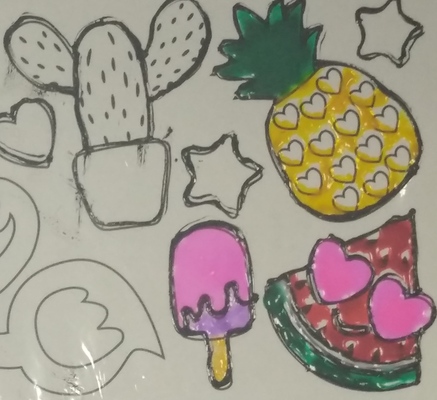
How to build a group? Or about the effective EFL group leadership.
- Whether it is a brand new group or ‘an old group’ but with a few new members, make sure you create opportunities for them to mingle and work in different combinations, pairs, teams, mini-groups. This will not only create an opportunity for you to observe how they work with different partners (also good: you can find the optimal set-up) but they will be given a chance to work together and make friends or, at least, break the ice and find out that the other person is cool / normal and / or ‘someone like you’ in one way or another.
- Think of the class rules. The older students can be involved in creating the class contract, the younger ones get their first set from the teacher since usually their level is too low (unless you want to do it in their L1, which can also be an option). In my classroom (or classrooms), we have had the same set of rules for a few years now, those introduced when the kids were still in the first year of pimary or even in pre-primary: ‘I listen to the teacher’, ‘I sit nicely’, ‘I raise my hand’, ‘Russian is beautiful but I speak English here’, all accompanied by visuals and gestures. Last year, when I primary grew up and became way too talkative, we had to add one more ‘When I speak, people listen. When people speak, I listen’. Again, it is a rule applicable in all the age groups. We only needed to specify that ‘people’ applies to the teacher and the kids (yes, it was all on the first poster, a list of the names of those who match the definition of ‘people’ here:-)
- Play games. Again, these are great for many different linguistic reasons (language practice, introduction, revision etc) but it is also one of the elements that helps the group gel. First of all, on a large scale, because these games will be a part of our pool of games and they will contribute to creating the traditions of our community (see below). Second of all, because they will give the teams a common goal for a part of a lesson and the battle to win it will be another unifying element
- Make sure you include something to balance the competitive element. A huge part of the games that we play in class promote competition. While this is good, because it motivates the students to participate and, it helps them learn to win and to lose, it is also good to remember that the kids will need an opportunity to be involved in activities that promote cooperation and collaboration. We don’t always need to split into winners and losers (especially not when pre-schoolers are involved). Some games can be played over a series of lessons, in the same teams, accumulating the points over the entire month. Plus, even if the game is competitive and we have a winner (or winners) and non-winners, the easiest thing to do is to encourage the kids to shake hands and congratulate each other. ‘Good game!’
- Celebrate. Sure, we are going to have a Halloween Lesson or a Christmas Lesson because these are the part of the culture that we expose our students, too, but again, they will go towards the things we do together. We have the tradition of ‘the food for the brain’ aka something sweet on the test day, ‘the pizza day’ at the end of the academic year and random ‘eating together’ with my youngest students, on random days when fancy takes us, celebrating nothing special. So that takes us to the other point, closely connected with celebrations and that is Food. (Caution: there are a few ground rules here, though: parents pre-approved food, paper plates, tissues and hands washed).
- Create and cherish the group’s traditions, the official ones like the tests and the follow-up reports, the serious ones like ‘the pizza day’ or the silly and the seemingly insignificant ones, like the first activity of the lesson and the last activity of the lesson, keeping the notebooks, a lesson with parents once in a while, a long-term craft project…It might be easier with the younger kids because we are more used to the idea of a routine framework that we follow from lesson to lesson but it is something that is worth keeping an eye on, developing and celebrating with primary and teenagers.
- Be fair. It is quite likely that a teacher will have her/his favourite and her / his less favourite students. That’s life but it can never show. Everyone is treated in the same way, with the same level of kindness, with the same amount of individual attention and praise.
- Be the model of behaviour, not only the model of English because the students pick up on that, without us realising that it is happening. I had my own moment of revelation when I started asking the kids to take turns in being the teacher in the homework check. ‘I don’t know. I didn’t do my homework’, said one of the students. ‘It’s ok. We can do it together now. Exercise 2, number 3? Can you try?’, said the student-teacher on the day. ‘Wow!’, I thought, ‘Where did they get that….Oh.’
- Let them take over, in some areas at least, from time to time. That will be beneficial for the language production (We want more!:-) but it will also help them become responsible for the lesson as they participate in the decision making process and for the classroom, too. A few years ago I had a pleasure of taking part in a wonderful session by Katherine Bilsborough ‘More Democracy in the Classroom’ which highlighted ten areas in which students can be given the opportunity to have a say and since then I have been incorportating them in my lessons, with all age groups. One day, I will get down to writing a post on that, too.
- Befriend the parents because they are a very important element of the YL group. ‘Befriend’ here translates as: keep them on the loop, inform, explain, give feedback, ask for feedback, share the aims…
- Ask for the kids’ opinion, not only about the content of the lesson but also about the lesson, the coursebook, the activities, the test…This will be the valuable feedback that will help you improve the experience for everyone but you will also show the students that their views matter.
- Breathe! Rome was not built in a day and creating a community will also take time. But it is definitely worth it!
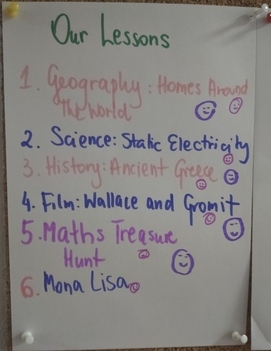
Happy teaching!








